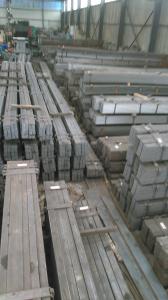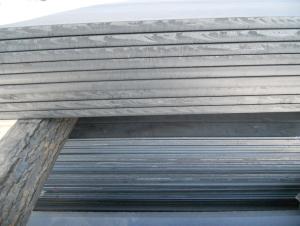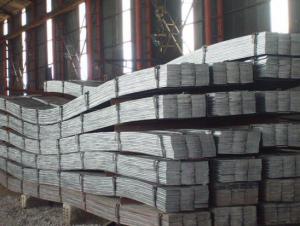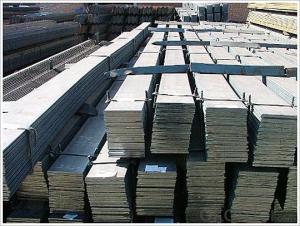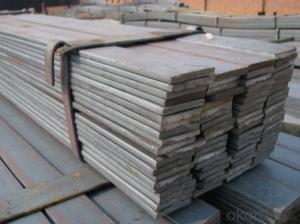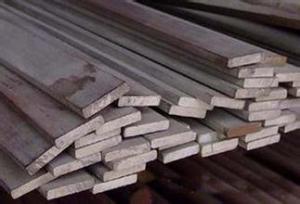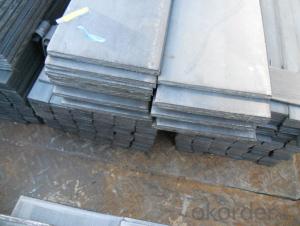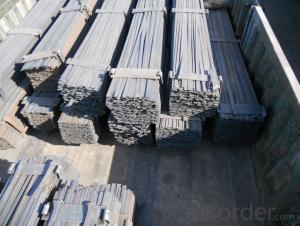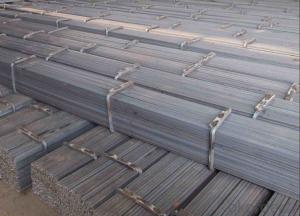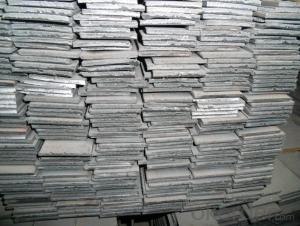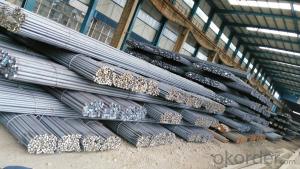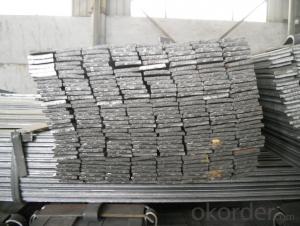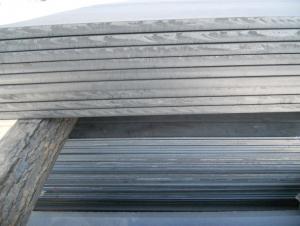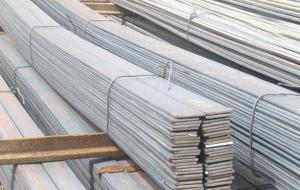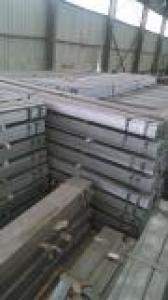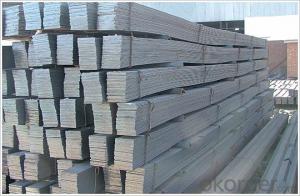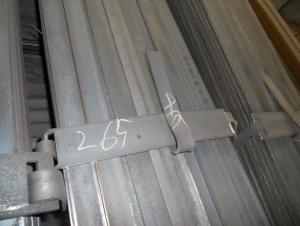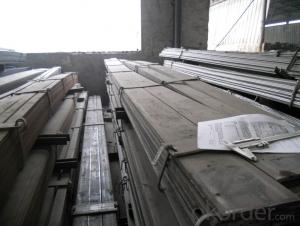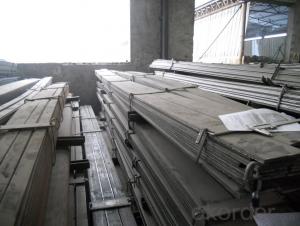Steel Flat Bars Low Carbon with Width 15mm-1250mm
- Loading Port:
- Tianjin
- Payment Terms:
- TT or LC
- Min Order Qty:
- 50 m.t.
- Supply Capability:
- 10000T m.t./month
OKorder Service Pledge
OKorder Financial Service
You Might Also Like
Product Description:
OKorder is offering Steel Flat Bars Low Carbon with Width 15mm-1250mm at great prices with worldwide shipping. Our supplier is a world-class manufacturer of steel, with our products utilized the world over. OKorder annually supplies products to African, South American and Asian markets. We provide quotations within 24 hours of receiving an inquiry and guarantee competitive prices.
Product Applications:
Steel Flat Bars Low Carbon with Width 15mm-1250mm are ideal for structural applications and are widely used in the construction of buildings and bridges, and the manufacturing, petrochemical, and transportation industries.
Product Advantages:
OKorder's Steel Flat Bars Low Carbon with Width 15mm-1250mm are durable, strong, and wide variety of sizes.
Main Product Features:
· Premium quality
· Prompt delivery & seaworthy packing (30 days after receiving deposit)
· Can be recycled and reused
· Mill test certification
· Professional Service
· Competitive pricing
Product Specifications:
Manufacture: slited
Slitting precision (width) : 0.5 mm or less
Raw material: Q235B, Q345B, Q235-1 b
crosscutting precision (length) : 2 mm or less
Processing: the thickness of 2.0-16 mm;
Shear length: 2000 mm above
Wide degree: 15-1250 - mm;
Leveling precision: 1-2 MM square
Packaging: Export packing, nude packing, bundled
Trademark | Rank | Chemical composition (quality score) % | |||||
C | Si | Mn | S | P | |||
≤ | ≤ | ≤ | |||||
Q235 | A | 0.14-0.22 | 0.30 | 0.30-0.65 | 0.050 | 0.045 | |
Q235 | B | 0.12-0.20 | 0.30 | 0.30-0.70 | 0.045 | 0.045 | |
Trademark | Rank | Pulling Test | |||||
Bend PointΔs/Mpa | Tensile Strength | Elongation Ratioδ5% | |||||
Thickness (Diameter) /MM | Thickness (Diameter) /MM | ||||||
≤16 | 16-40 | ≤16 | 16-40 | ||||
≥ | ≥ | ||||||
Q235 | A | 235 | 225 | 375-500 | 26 | 25 | |
Q235 | B | 235 | 225 | 375-500 | 26 | 25 | |
FAQ:
Q1: Why buy Materials & Equipment from OKorder.com?
A1: All products offered byOKorder.com are carefully selected from China's most reliable manufacturing enterprises. Through its ISO certifications, OKorder.com adheres to the highest standards and a commitment to supply chain safety and customer satisfaction.
Q2: How do we guarantee the quality of our products?
A2: We have established an advanced quality management system which conducts strict quality tests at every step, from raw materials to the final product. At the same time, we provide extensive follow-up service assurances as required.
Q3: what is the difference between actual weight and theoretical weight?
A3: All the section steel has two weights: actual weight and theoretical weight. Actual weight is the weighing out when the product delivered from the mill. Theoretical weight is calculated by pieces. The invoice can be based on each of them as your request.
Images:

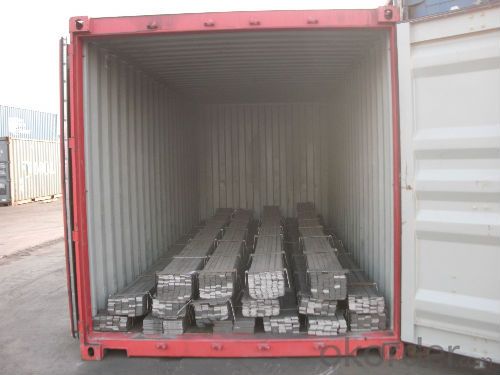
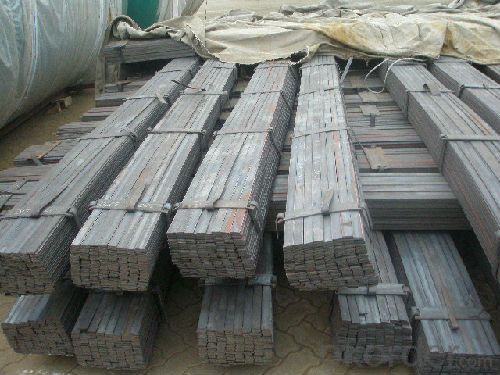
- Q: Difference between cold drawn flat steel and flat steel
- Cold drawn flat steel: steel, smooth surface,Flat steel: steel is relatively soft, flatness, no cold drawn flat steel
- Q: Are steel flat bars available in different colors?
- Steel flat bars do not come in various colors, I'm afraid. Usually, steel is manufactured with its inherent grey hue due to its composition and production process. Nonetheless, it is feasible to alter the color of steel flat bars by applying diverse coatings or paint. These coatings can offer extra defense against rust or purely serve aesthetic intentions.
- Q: What does QB stand for in Q235B flat steel? What's the difference between Q235B and Q235A?
- Low alloy steel Q235A and Q235B in A, B is the difference between the level of quality (total seems to be divided into four levels, you can check and confirm), the main difference is whether it is necessary to do the normal impact test, A does not need to do, need to do B.
- Q: Can steel flat bars be used in the manufacturing of electrical enclosures?
- Yes, steel flat bars can be used in the manufacturing of electrical enclosures. Steel is a commonly used material for enclosures due to its strength, durability, and ability to provide protection against various external factors such as corrosion and impact. Flat bars made of steel can be easily fabricated and welded to create the desired shape and size for electrical enclosures, making them a suitable choice for this purpose.
- Q: Can steel flat bars be hardened?
- Yes, steel flat bars can be hardened through a heat treatment process called quenching and tempering. This involves heating the steel to a high temperature and then rapidly cooling it in water or oil, which increases its hardness. The hardened steel can then be further tempered to improve its toughness and reduce brittleness.
- Q: Can steel flat bars be used for making brackets or supports for automotive accessories?
- Steel flat bars are a great choice for producing brackets or supports for automotive accessories. Steel, being a robust and long-lasting material, offers exceptional structural support. The bars' flat shape allows for effortless bending and shaping to match the specific dimensions and angles required for brackets or supports. Furthermore, steel flat bars can be joined either by welding or bolting, providing flexibility in design and installation. In addition, steel is highly resistant to corrosion, making it suitable for automotive applications where exposure to moisture or other elements is common. In summary, steel flat bars are a dependable and popular option for fabricating brackets or supports for automotive accessories because of their strength, versatility, and durability.
- Q: Are steel flat bars commonly used in the construction of sports facilities?
- Steel flat bars are commonly employed in the construction of sports facilities. Their versatility and durability make them suitable for various applications in this field. Structural components like beams, columns, and frames are often made from steel flat bars. These bars are also used to build bleachers, grandstands, and other seating structures due to their strength and stability. Furthermore, they play a significant role in the assembly of equipment such as goal posts, fencing, and netting systems. Overall, steel flat bars are a favored option for constructing sports facilities because of their strength, versatility, and ability to withstand heavy loads and harsh weather conditions.
- Q: What is the difference between a steel flat bar and a steel square tube?
- A steel flat bar and a steel square tube are both forms of steel materials commonly used in construction and manufacturing. However, they differ in their shape and structural properties. The main difference lies in their cross-sectional shape. A steel flat bar has a rectangular shape with two flat parallel surfaces and straight edges, while a steel square tube has a hollow square shape with four equal sides and thicker walls. In terms of structural properties, a steel flat bar is typically used for its strength in resisting bending or flexing. It is often used as a support or reinforcement in construction projects, such as for framing or bracing purposes. On the other hand, a steel square tube offers greater strength and rigidity due to its hollow structure. It is commonly used as a structural component for load-bearing applications, such as in building frameworks, machinery, or in the manufacturing of furniture. Additionally, the manufacturing process for these two steel forms can differ. Steel flat bars are usually produced by hot rolling, which involves heating the steel billet and passing it through a series of rolling stands. This process results in a flat shape with smooth surfaces. In contrast, steel square tubes are typically manufactured through a process called electric resistance welding (ERW), where a flat strip of steel is formed into a tube shape and then welded along the edges. In summary, while both steel flat bars and steel square tubes are made of the same material, their shape and structural properties make them suitable for different applications. Steel flat bars are commonly used for support and reinforcement purposes, while steel square tubes are preferred for load-bearing applications due to their greater strength and rigidity.
- Q: Are steel flat bars used in the manufacturing of appliances?
- Yes, steel flat bars are commonly used in the manufacturing of appliances. They are often used as a structural component or for reinforcement purposes due to their strength, durability, and versatility.
- Q: Can steel flat bars be cold formed or hot rolled?
- The desired outcome and application determine whether steel flat bars are cold formed or hot rolled. Cold forming involves shaping the steel at or slightly below room temperature, typically through bending or rolling. This technique is preferred when precise shapes or sizes are necessary, as it provides greater control and accuracy in the final product. On the other hand, hot rolling entails heating the steel beyond its recrystallization temperature and then passing it through rollers to achieve the desired shape. This method is commonly employed to produce large quantities of steel bars rapidly and efficiently. Hot rolled steel flat bars are renowned for their strength and durability, making them suitable for a wide range of industrial and structural applications. To sum up, steel flat bars can be cold formed or hot rolled, with each approach offering distinct advantages based on the intended usage.
Send your message to us
Steel Flat Bars Low Carbon with Width 15mm-1250mm
- Loading Port:
- Tianjin
- Payment Terms:
- TT or LC
- Min Order Qty:
- 50 m.t.
- Supply Capability:
- 10000T m.t./month
OKorder Service Pledge
OKorder Financial Service
Similar products
Hot products
Hot Searches
Related keywords
